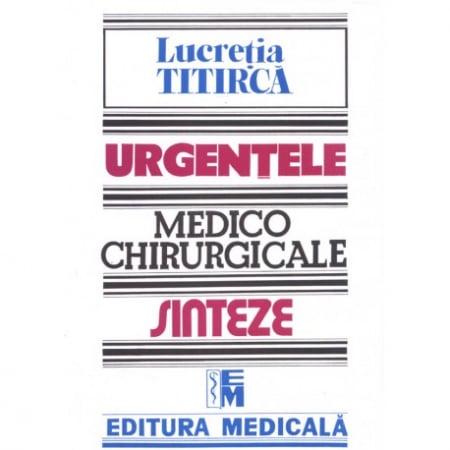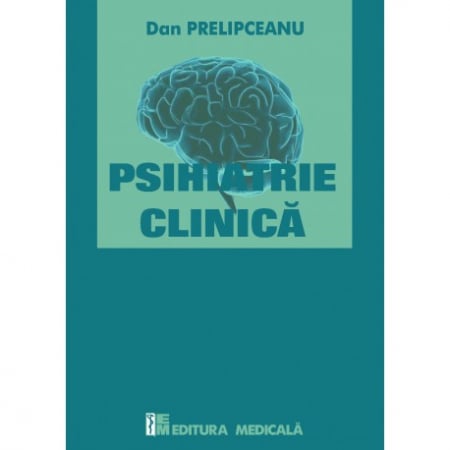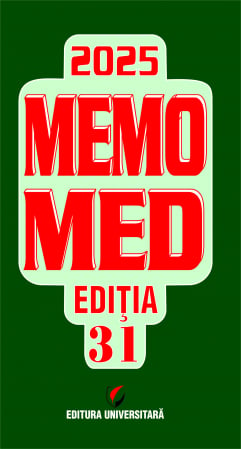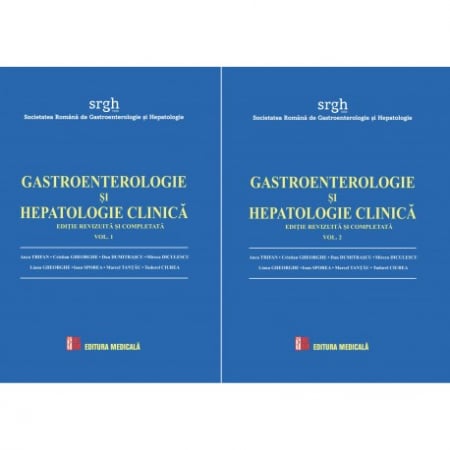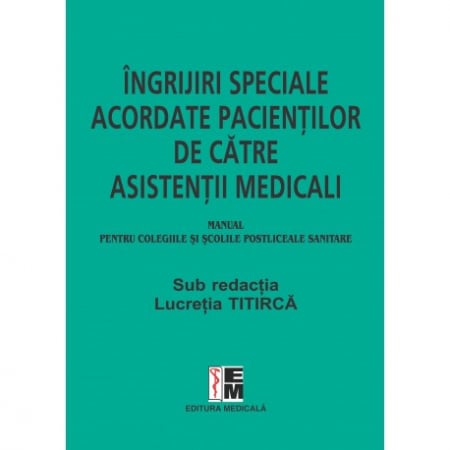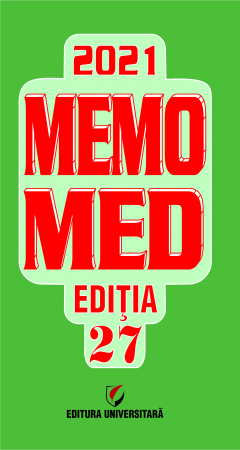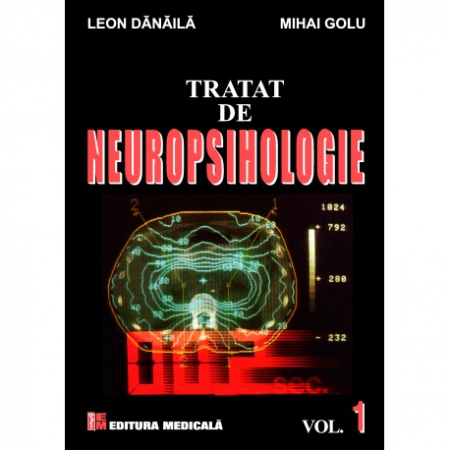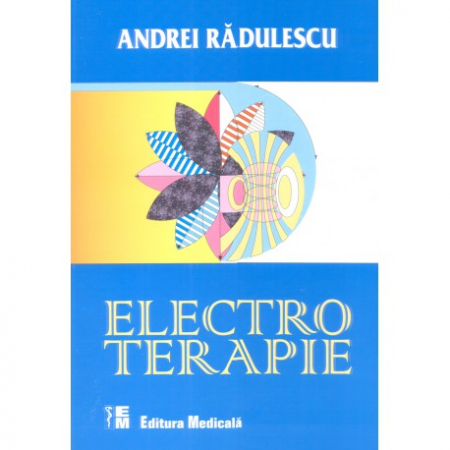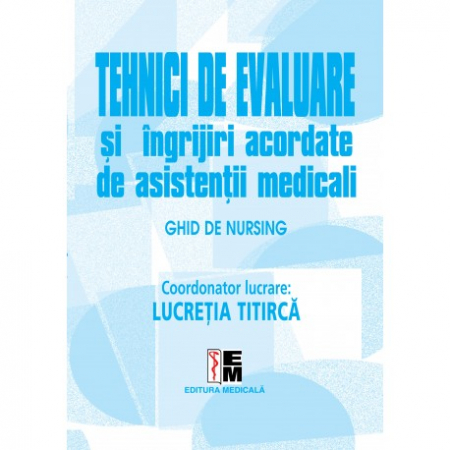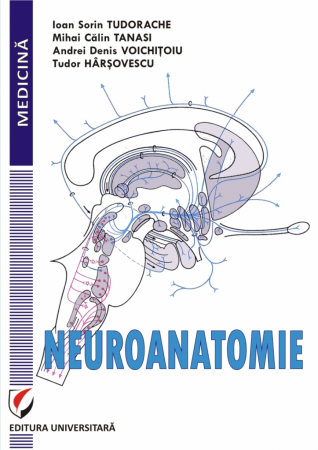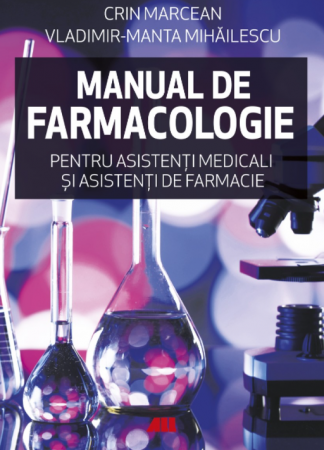Manuscript proposals: [email protected] / 0745 204 115 //// Tracking orders Individuals / Sales: 0745 200 357 / Orders Legal entities: 0721 722 783
Publisher: Editura Universitară
Author: Radu G. Hertzog
Edition: I
Pages: 300
Publisher year: 2023
ISBN: 978-606-28-1580-6
DOI: https://doi.org/10.5682/9786062815806
Product Code:
9786062815806
Do you need help?
0745 200 357
- Description
- Download (1)
- Authors
- Content
- More details
- Reviews (0)
Seneca said that, from the moment we are born, time begins to take our lives back, not suspecting 2000 years ago, that that time is measured by the telomeric clock. This book is about this biological time assessment tool. A work from the biomedical field that makes an incursion into the constellation of molecules around telomeres. A multi-disciplinary scientific approach addressed to those interested in understanding the phenomenon of aging and, why not, its reversal. A book for those gripped by the mirage of immortality, for those who believe that maintaining the length of telomeres is the strength that life needs to resist death. However, no one could stop the telomeric clock, only influence it...for now.
Author
Author
-
Biology of human telomeres
Download
RADU G. HERTZOG is primary care physician in laboratory medicine since 2011, scientific researcher gr. III with over 20 years of experience in the field of biomedical scientific research, doctor of medicine (genetics) since 2005. He coordinated the activity of the neuropsychopharmacology section within the Medical-Military Scientific Research Center, and between 2016-2020 he was its commander . In 2021, he was the scientific director of the Cantacuzino Institute. In the last 10 years, he was the main national member of the Medicine and Human Factors panel of the NATO Science and Technology Organization. Author or co-author of over 50 works (14 WOS), a NATO award and an invention patent. He is a founding member and president of the Romanian Telemicroscopy Society. From 2022, scientific consultant and entrepreneur in the CDI field.
Foreword / 5
Author's word / 7
Abbreviations / 16
1. The telomere / 19
1.1. The history of telomeres / 19
1.2. Telomeres at the cellular level / 20
1.2.1. Telomere length / 22
1.2.2. Life span / 27
1.2.3. The interaction of telomeres with nuclear structures / 30
1.3. The functions of telomeres / 31
1.4. Telomeres at the molecular level / 32
1.4.1. Telomeric DNA / 32
1.4.1.1. Quadruplexes G / 34
1.4.2. Telomeric proteins / 35
1.4.2.1. Selterin complex / 36
1.4.2.2. Other telomeric proteins / 45
1.4.3. Telomeric interactions / 51
1.5. The positional effect of telomeres / 54
1.6. Chromatin of telomeres / 56
1.7. Telomeres of meiotic cells / 60
2. Telomerase / 64
2.1. The architecture of telomerase / 65
2.1.1. RNA subunit / 65
2.1.2. Catalytic subunit / 72
2.1.3. Telomerase-associated proteins / 75
2.2. hTERT / 77 gene
2.2.1. Structure of the hTERT / 78 gene
2.2.2. Regulation of hTERT / 79 gene expression
2.2.2.1. Regulation of hTERT / 80 gene transcription
2.2.2.2. Regulation of hTERT expression by alternative splicing / 84
2.2.2.3. Post-translational regulation of hTERT / 85
2.3. Nuclear import of hTERT / 88
2.4. The hTR / 90 gene
2.4.1. Regulation of hTR / 90 gene expression
2.4.2. Maturation of hTR / 91
2.5. Assembly of the telomerase complex / 92
2.6. Telomerase recruitment to telomeres / 94
2.7. The functions of telomerase / 96
2.7.1. Elongation of telomeres / 97
2.7.2. Other functions of telomerase / 102
3. Cellular senescence / 106
3.1. Replicative senescence / 107
3.1.1. Telomere shortening / 108
3.2. Premature senescence / 112
3.3. Characteristics of cellular senescence / 113
3.3.1. Blocking the cell cycle / 114
3.3.2. Morphological changes / 117
3.3.3. The secretory phenotype associated with senescence and autophagy / 119
3.3.4. Biochemical changes / 121
3.3.5. Changes in gene expression / 124
3.3.6. Chromatin modifications / 125
3.3.7. Signaling pathways in cellular senescence / 127
3.3.8. Modifications of DNA / 129
3.4. Telomeropathies / 130
3.4.1. Primary telomeropathy / 133
3.4.2. Secondary telomeropathy / 136
3.4.3. Diseases associated with aging / 141
4. From cellular senescence to the aging of the body / 149
4.1. Theories regarding the causes of aging / 151
4.1.1. Programmed theories / 153
4.1.2. Non-programmed theories / 154
4.2. Characteristics of aging / 160
4.2.1. Genetic instability / 160
4.2.2. Telomere shortening / 163
4.2.3. Epigenetic alterations / 165
4.2.4. Loss of proteostasis / 168
4.2.5. Dysregulated response to nutrients / 169
4.2.6. Mitochondrial dysfunction / 171
4.2.7. Cellular senescence / 172
4.2.8. Depletion of stem cells / 173
4.2.9. Altered intercellular communication / 174
4.3. Therapies regarding the extension of life expectancy / 175
4.3.1. Primary prevention / 176
4.3.2. Hormesis / 176
4.3.3. Supplements and pharmaceutical products / 177
4.3.4. Hormonal therapies / 179
4.3.5. Therapies based on telomerase / 180
4.3.6. Use of stem cells / 181
4.3.7. ALT‑711 / 182
4.3.8. Heterochronic parabiosis / 182
5. Telomeres, telomerase, tumorigenesis / 184
5.1. Telomere dysfunction and tumor development / 184
5.1.1. Telomeric crisis / 186
5.2. hTERT control in cancer / 189
5.2.1. Gene amplification / 190
5.2.2. Structural variants of hTERT / 191
5.2.3. Genomic rearrangements / 194
5.2.4. Mutations of the hTERT gene promoter / 194
5.2.5. Epigenetic modifications of the hTERT / 197 gene promoter
6. Therapies that target telomeres and telomerase / 202
6.1. The connection between senescence, immortalization and tumorigenesis / 202
6.1.1. Senescence - immortalization / 202
6.1.2. Immortalization - tumorigenesis / 205
6.2. Telomerase – therapeutic target / 207
6.2.1. Telomerase in the therapy of diseases associated with senescence / 208
6.2.2. Telomerase in regenerative medicine / 210
6.2.3. Telomeres and telomerase in cancer therapy / 213
6.2.3.1. Telomerase inhibitors / 213
6.2.3.2. Oligonucleotides homologous to telomeres / 217
6.2.3.3. hTERT – immunotherapeutic target / 218
6.2.3.4. Telomeric proteins – the target of a new anticancer strategy / 221
6.2.3.5. Telomerase - target in cancer gene therapy / 222
6.3. Advantages and risks / 224
7. Methods of investigating telomeres and telomerase / 227
7.1. Telomere evaluation methods / 227
7.2. Telomerase evaluation methods / 235
Bibliography / 241
Author's word / 7
Abbreviations / 16
1. The telomere / 19
1.1. The history of telomeres / 19
1.2. Telomeres at the cellular level / 20
1.2.1. Telomere length / 22
1.2.2. Life span / 27
1.2.3. The interaction of telomeres with nuclear structures / 30
1.3. The functions of telomeres / 31
1.4. Telomeres at the molecular level / 32
1.4.1. Telomeric DNA / 32
1.4.1.1. Quadruplexes G / 34
1.4.2. Telomeric proteins / 35
1.4.2.1. Selterin complex / 36
1.4.2.2. Other telomeric proteins / 45
1.4.3. Telomeric interactions / 51
1.5. The positional effect of telomeres / 54
1.6. Chromatin of telomeres / 56
1.7. Telomeres of meiotic cells / 60
2. Telomerase / 64
2.1. The architecture of telomerase / 65
2.1.1. RNA subunit / 65
2.1.2. Catalytic subunit / 72
2.1.3. Telomerase-associated proteins / 75
2.2. hTERT / 77 gene
2.2.1. Structure of the hTERT / 78 gene
2.2.2. Regulation of hTERT / 79 gene expression
2.2.2.1. Regulation of hTERT / 80 gene transcription
2.2.2.2. Regulation of hTERT expression by alternative splicing / 84
2.2.2.3. Post-translational regulation of hTERT / 85
2.3. Nuclear import of hTERT / 88
2.4. The hTR / 90 gene
2.4.1. Regulation of hTR / 90 gene expression
2.4.2. Maturation of hTR / 91
2.5. Assembly of the telomerase complex / 92
2.6. Telomerase recruitment to telomeres / 94
2.7. The functions of telomerase / 96
2.7.1. Elongation of telomeres / 97
2.7.2. Other functions of telomerase / 102
3. Cellular senescence / 106
3.1. Replicative senescence / 107
3.1.1. Telomere shortening / 108
3.2. Premature senescence / 112
3.3. Characteristics of cellular senescence / 113
3.3.1. Blocking the cell cycle / 114
3.3.2. Morphological changes / 117
3.3.3. The secretory phenotype associated with senescence and autophagy / 119
3.3.4. Biochemical changes / 121
3.3.5. Changes in gene expression / 124
3.3.6. Chromatin modifications / 125
3.3.7. Signaling pathways in cellular senescence / 127
3.3.8. Modifications of DNA / 129
3.4. Telomeropathies / 130
3.4.1. Primary telomeropathy / 133
3.4.2. Secondary telomeropathy / 136
3.4.3. Diseases associated with aging / 141
4. From cellular senescence to the aging of the body / 149
4.1. Theories regarding the causes of aging / 151
4.1.1. Programmed theories / 153
4.1.2. Non-programmed theories / 154
4.2. Characteristics of aging / 160
4.2.1. Genetic instability / 160
4.2.2. Telomere shortening / 163
4.2.3. Epigenetic alterations / 165
4.2.4. Loss of proteostasis / 168
4.2.5. Dysregulated response to nutrients / 169
4.2.6. Mitochondrial dysfunction / 171
4.2.7. Cellular senescence / 172
4.2.8. Depletion of stem cells / 173
4.2.9. Altered intercellular communication / 174
4.3. Therapies regarding the extension of life expectancy / 175
4.3.1. Primary prevention / 176
4.3.2. Hormesis / 176
4.3.3. Supplements and pharmaceutical products / 177
4.3.4. Hormonal therapies / 179
4.3.5. Therapies based on telomerase / 180
4.3.6. Use of stem cells / 181
4.3.7. ALT‑711 / 182
4.3.8. Heterochronic parabiosis / 182
5. Telomeres, telomerase, tumorigenesis / 184
5.1. Telomere dysfunction and tumor development / 184
5.1.1. Telomeric crisis / 186
5.2. hTERT control in cancer / 189
5.2.1. Gene amplification / 190
5.2.2. Structural variants of hTERT / 191
5.2.3. Genomic rearrangements / 194
5.2.4. Mutations of the hTERT gene promoter / 194
5.2.5. Epigenetic modifications of the hTERT / 197 gene promoter
6. Therapies that target telomeres and telomerase / 202
6.1. The connection between senescence, immortalization and tumorigenesis / 202
6.1.1. Senescence - immortalization / 202
6.1.2. Immortalization - tumorigenesis / 205
6.2. Telomerase – therapeutic target / 207
6.2.1. Telomerase in the therapy of diseases associated with senescence / 208
6.2.2. Telomerase in regenerative medicine / 210
6.2.3. Telomeres and telomerase in cancer therapy / 213
6.2.3.1. Telomerase inhibitors / 213
6.2.3.2. Oligonucleotides homologous to telomeres / 217
6.2.3.3. hTERT – immunotherapeutic target / 218
6.2.3.4. Telomeric proteins – the target of a new anticancer strategy / 221
6.2.3.5. Telomerase - target in cancer gene therapy / 222
6.3. Advantages and risks / 224
7. Methods of investigating telomeres and telomerase / 227
7.1. Telomere evaluation methods / 227
7.2. Telomerase evaluation methods / 235
Bibliography / 241
From their discovery in 1938 by Herman J. Muller until now, the scientific interest in the ends of chromosomes has had an interesting evolution. If at the beginning, interest in the study of chromosome ends was very low, immediately after the demonstration of their role in maintaining the integrity of chromosomes by Barbara McClintock in 1940, the interest of scientists grew more and more, reaching a maximum point in the 2000s when the role of telomere dysfunction in senescence was highlighted, in the development of cancer and diseases associated with the aging process.
Like many other major discoveries that at first caused the amusement of the public or, worse, the persecution of the authors, the discussions about the existence of the telomeric microcosm would have sparked perhaps only laughter 100 years ago. However, maintaining the length of telomeres is the strength that life needs to resist death.
Numerous studies on the causative factors of the aging process and associated diseases have revolutionized the telomeric domain of human chromosomes and opened new ways of approaching the molecular and cellular mechanisms of the aging and tumorigenesis processes. Moreover, the progress made in the field of knowledge of diseases associated with aging has largely led to the understanding of the fundamental phenomena that characterize this process.
The aging of the body and the development of diseases associated with this process concern both scientists and ordinary citizens. The question arises more and more: is it possible for the aging process to be delayed and life expectancy to be extended? Before answering this question, it would be good to remember Cicero's famous maxim "Pugnandum tamquam contra morbum sic contra senectutem" (Let us fight against old age as we fight against death) and act accordingly. For this, it is necessary to first understand the molecular and cellular mechanisms that underlie the evolution of the aging process and then to develop effective strategies that lead to delaying the onset of old age diseases, which are the main causes of death, but without increasing the risk of appearance of cancer, also a disease of old age.
A book about the structure and functions of telomeres in the context of cellular senescence and aging is more than necessary in our country, where this spectacular field of telomeres and telomerase occupies a small space in scientific research. Although in recent years significant progress has been made in the knowledge of the structure and functions of telomeres, but also in the field of most of the proteins associated with them, there is still a lot of unknowns regarding the functions of some of them, the molecular mechanisms by which mutations of their genes trigger a certain pathology.
The mechanism of hTR maturation is still not well understood, as is the regulation of hTR expression. The biological function of the G-quadruplex remains little known. Also, the structure of hTERT is not yet well established, and the mechanism by which the shortening of telomeres causes the blocking of cell division remains unknown. Last but not least, is telomere shortening the cause or is it just a consequence of aging?
Some challenges in this field are very topical.
The study of the role of epigenetic factors and TERRA molecules in the development of cancer is an area of great interest. The study of gene mutations for proteins associated with telomeres could lead to the discovery of other pathological conditions alongside the known ones.
Cellular senescence is another topic of scientific debate because remarkable progress has not yet been made in understanding and engineering the molecular mechanisms of senescence. Deciphering the signaling pathways of cellular senescence is an important objective of international scientific research.
Another exciting field is tissue engineering, which seeks to restore and maintain tissue functions following diseases or traumatic processes.
Also, it is important to investigate the roles of hTERT in mitochondria considering their importance in cells.
Telomerase, by quantity, but especially by activity, represents a regulator of the speed with which life goes towards the scaffold.
Telomerase inhibition and/or reactivation have revolutionized curative medicine. The development of medicinal products or telomerase repression strategies for therapeutic purposes are research areas with a very high impact on people affected by cancer. The structure of telomeres must be a new target of anticancer therapy. The reactivation of telomerase in normal cells has a major impact for the future of geriatric medicine. The development of telomerase activators, without inducing cell transformation, is a major objective of pharmaceutical companies.
Although I have tried to synthetically include in this book everything related to the length, structure, integrity, functions and dysfunctions of telomeres, I want to convey to interested readers that some topics may have gaps because, as I mentioned above, research in this field is in full ascension and information appears constantly.
I have seen that whenever a technology or a therapy appears, as a result of scientific research done honestly, in good faith, by scientists, it does not take long for individuals to appear who consider using the benefits of science in their personal interest. It is not surprising that therapies aimed at blocking the activity of myostatin (a protein that negatively regulates the growth of muscle mass), used in myopathies (e.g. Duchenne muscular dystrophy), have attracted more bodybuilding practitioners than those with degenerative diseases. As if in the same way in which the two faces of the Roman god Janus are represented, the use of the negative variant from the duality of any innovation represents a permanent risk for the human species.
Beyond the benefits brought to the quality of people's lives or the mirage of immortality, the methods of delaying aging through senolytics, stem cell therapies, non-pharmacological means, the use of telomerase or the manipulation of the telomere length modulation mechanisms, could prove extremely dangerous for the evolution of man, but not so much for medical reasons as especially for social reasons, offering the opportunity to extend the life span precisely for some individuals who would not have deserved to be born, thus feeding the reserve of dictators and tyrants. Perhaps it is not by chance that the life span is limited.
Immortality is not and will not be a gain for humanity in general, but especially if we allow unbalanced characters to creep in who seek to obtain everything that science offers better.
However, humanity needs a dream, so beautifully evoked in Romanian folklore, "youth without old age and life without death".
Author
Like many other major discoveries that at first caused the amusement of the public or, worse, the persecution of the authors, the discussions about the existence of the telomeric microcosm would have sparked perhaps only laughter 100 years ago. However, maintaining the length of telomeres is the strength that life needs to resist death.
Numerous studies on the causative factors of the aging process and associated diseases have revolutionized the telomeric domain of human chromosomes and opened new ways of approaching the molecular and cellular mechanisms of the aging and tumorigenesis processes. Moreover, the progress made in the field of knowledge of diseases associated with aging has largely led to the understanding of the fundamental phenomena that characterize this process.
The aging of the body and the development of diseases associated with this process concern both scientists and ordinary citizens. The question arises more and more: is it possible for the aging process to be delayed and life expectancy to be extended? Before answering this question, it would be good to remember Cicero's famous maxim "Pugnandum tamquam contra morbum sic contra senectutem" (Let us fight against old age as we fight against death) and act accordingly. For this, it is necessary to first understand the molecular and cellular mechanisms that underlie the evolution of the aging process and then to develop effective strategies that lead to delaying the onset of old age diseases, which are the main causes of death, but without increasing the risk of appearance of cancer, also a disease of old age.
A book about the structure and functions of telomeres in the context of cellular senescence and aging is more than necessary in our country, where this spectacular field of telomeres and telomerase occupies a small space in scientific research. Although in recent years significant progress has been made in the knowledge of the structure and functions of telomeres, but also in the field of most of the proteins associated with them, there is still a lot of unknowns regarding the functions of some of them, the molecular mechanisms by which mutations of their genes trigger a certain pathology.
The mechanism of hTR maturation is still not well understood, as is the regulation of hTR expression. The biological function of the G-quadruplex remains little known. Also, the structure of hTERT is not yet well established, and the mechanism by which the shortening of telomeres causes the blocking of cell division remains unknown. Last but not least, is telomere shortening the cause or is it just a consequence of aging?
Some challenges in this field are very topical.
The study of the role of epigenetic factors and TERRA molecules in the development of cancer is an area of great interest. The study of gene mutations for proteins associated with telomeres could lead to the discovery of other pathological conditions alongside the known ones.
Cellular senescence is another topic of scientific debate because remarkable progress has not yet been made in understanding and engineering the molecular mechanisms of senescence. Deciphering the signaling pathways of cellular senescence is an important objective of international scientific research.
Another exciting field is tissue engineering, which seeks to restore and maintain tissue functions following diseases or traumatic processes.
Also, it is important to investigate the roles of hTERT in mitochondria considering their importance in cells.
Telomerase, by quantity, but especially by activity, represents a regulator of the speed with which life goes towards the scaffold.
Telomerase inhibition and/or reactivation have revolutionized curative medicine. The development of medicinal products or telomerase repression strategies for therapeutic purposes are research areas with a very high impact on people affected by cancer. The structure of telomeres must be a new target of anticancer therapy. The reactivation of telomerase in normal cells has a major impact for the future of geriatric medicine. The development of telomerase activators, without inducing cell transformation, is a major objective of pharmaceutical companies.
Although I have tried to synthetically include in this book everything related to the length, structure, integrity, functions and dysfunctions of telomeres, I want to convey to interested readers that some topics may have gaps because, as I mentioned above, research in this field is in full ascension and information appears constantly.
I have seen that whenever a technology or a therapy appears, as a result of scientific research done honestly, in good faith, by scientists, it does not take long for individuals to appear who consider using the benefits of science in their personal interest. It is not surprising that therapies aimed at blocking the activity of myostatin (a protein that negatively regulates the growth of muscle mass), used in myopathies (e.g. Duchenne muscular dystrophy), have attracted more bodybuilding practitioners than those with degenerative diseases. As if in the same way in which the two faces of the Roman god Janus are represented, the use of the negative variant from the duality of any innovation represents a permanent risk for the human species.
Beyond the benefits brought to the quality of people's lives or the mirage of immortality, the methods of delaying aging through senolytics, stem cell therapies, non-pharmacological means, the use of telomerase or the manipulation of the telomere length modulation mechanisms, could prove extremely dangerous for the evolution of man, but not so much for medical reasons as especially for social reasons, offering the opportunity to extend the life span precisely for some individuals who would not have deserved to be born, thus feeding the reserve of dictators and tyrants. Perhaps it is not by chance that the life span is limited.
Immortality is not and will not be a gain for humanity in general, but especially if we allow unbalanced characters to creep in who seek to obtain everything that science offers better.
However, humanity needs a dream, so beautifully evoked in Romanian folklore, "youth without old age and life without death".
Author
If you want to express your opinion about this product you can add a review.
write a review

6359.png)
![Biology of human telomeres - Radu G. Hertzog [1] Biology of human telomeres - Radu G. Hertzog [1]](https://gomagcdn.ro/domains/editurauniversitara.ro/files/product/large/biologia-telomerilor-umani-160255.jpg)
